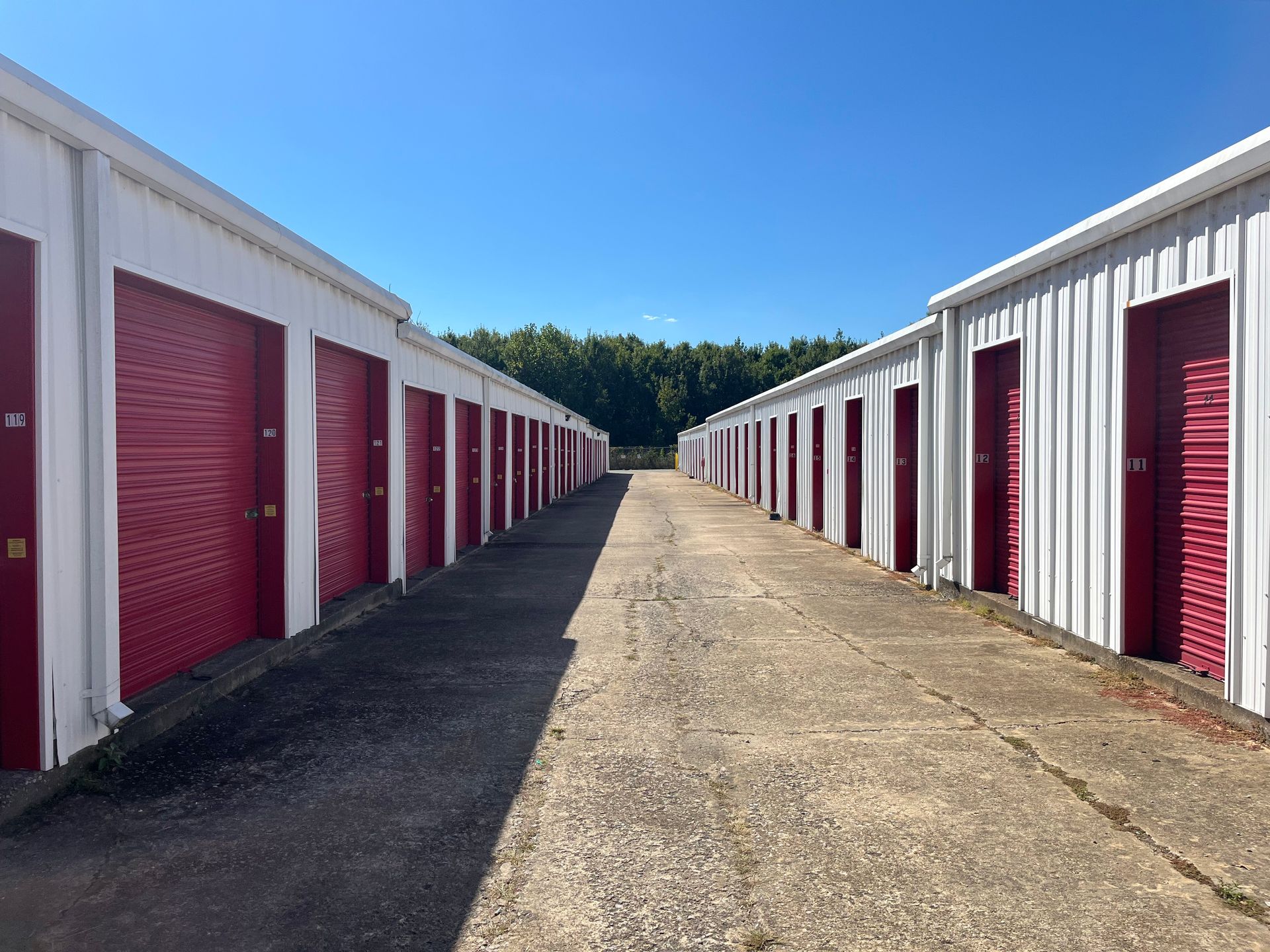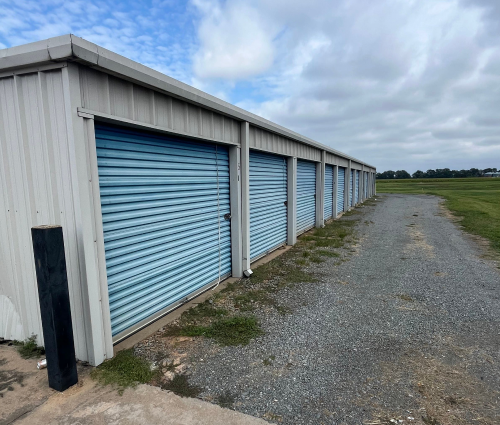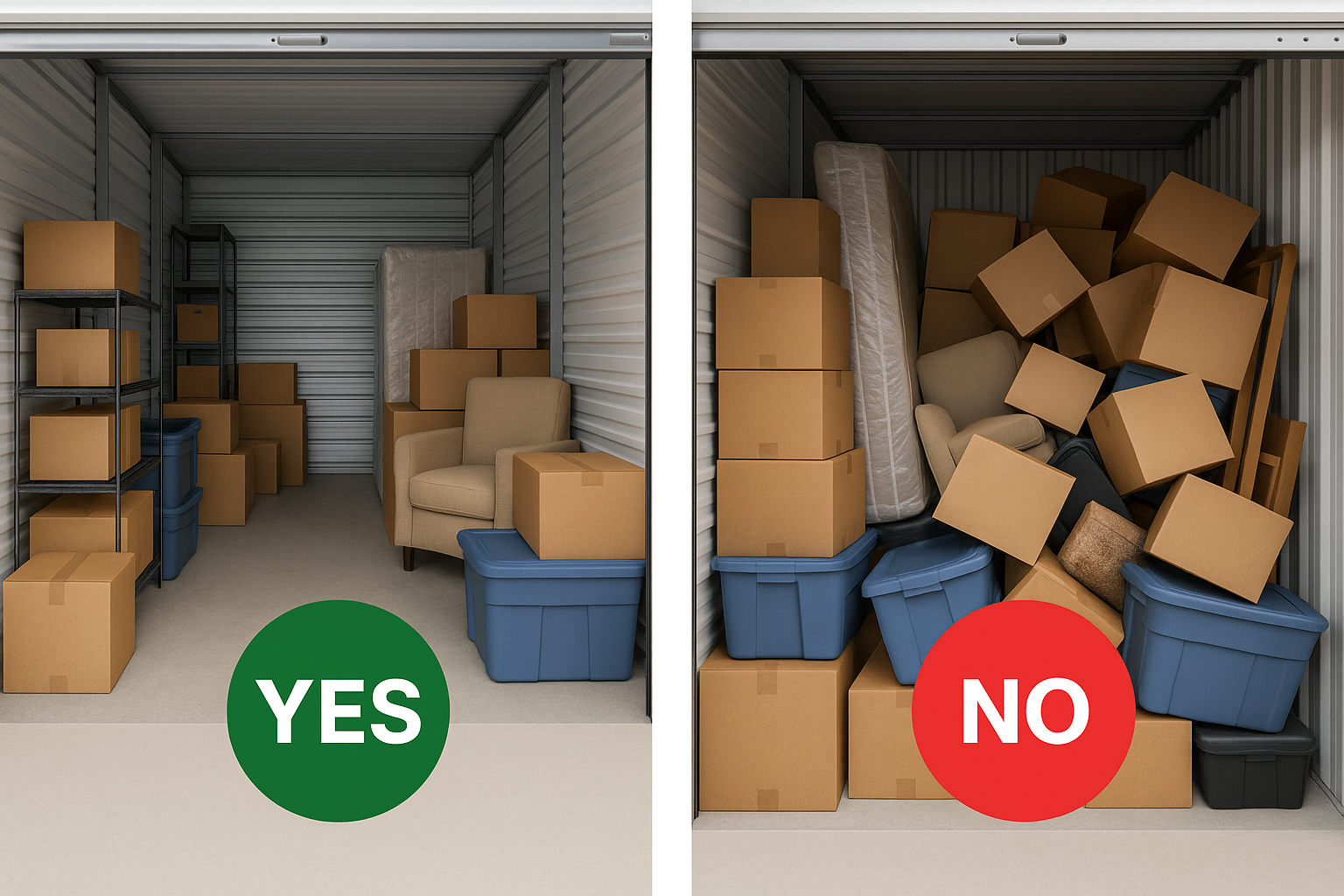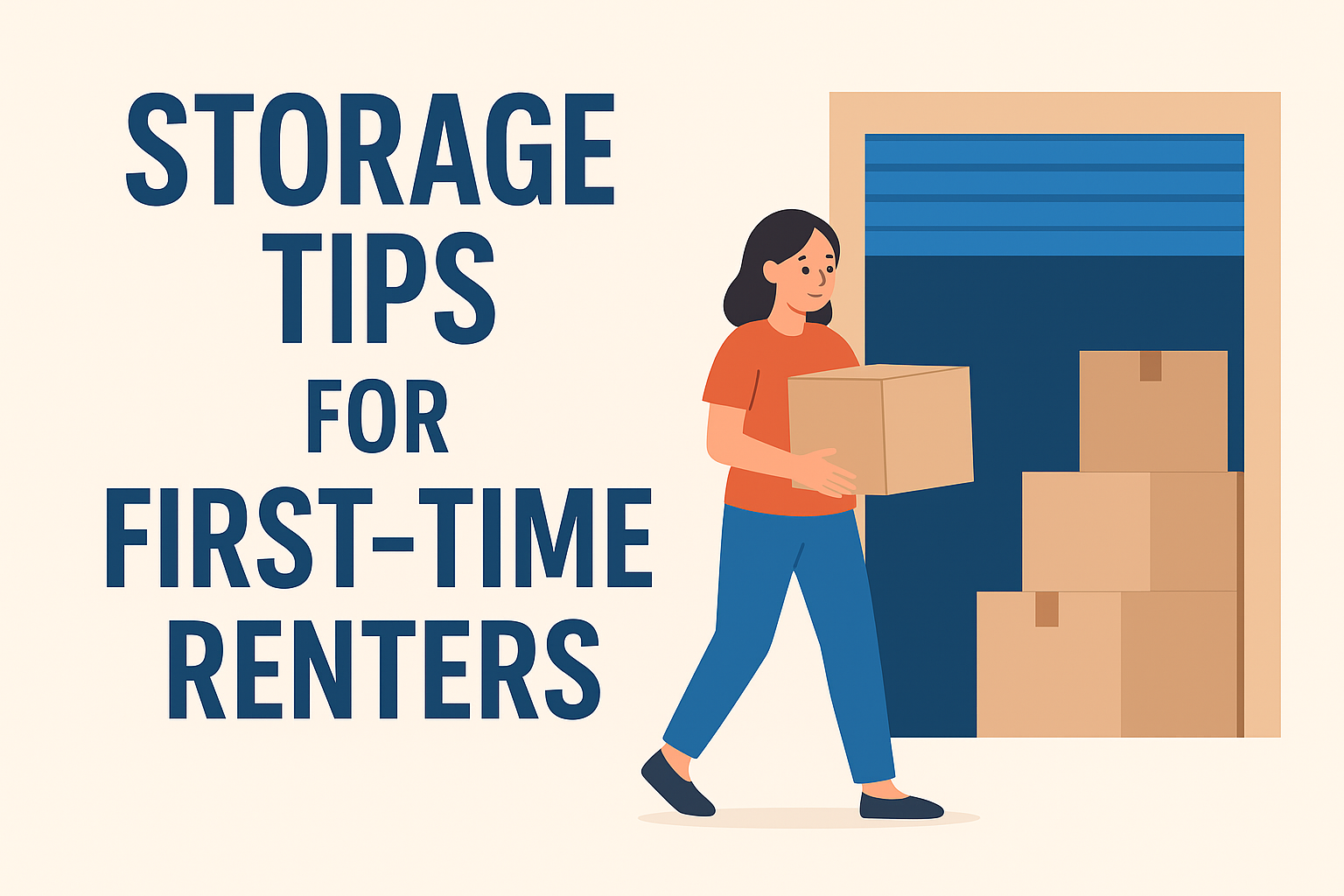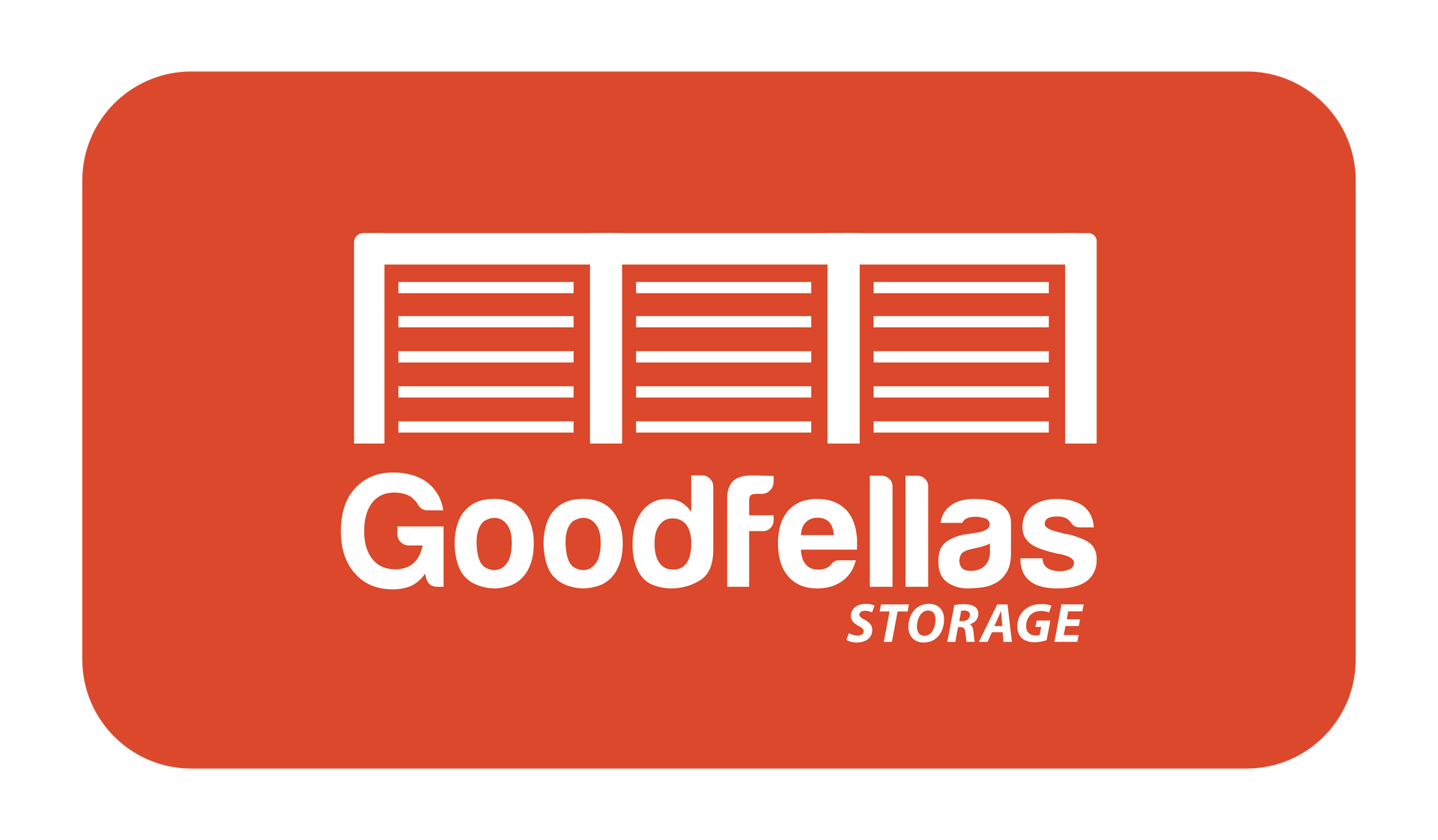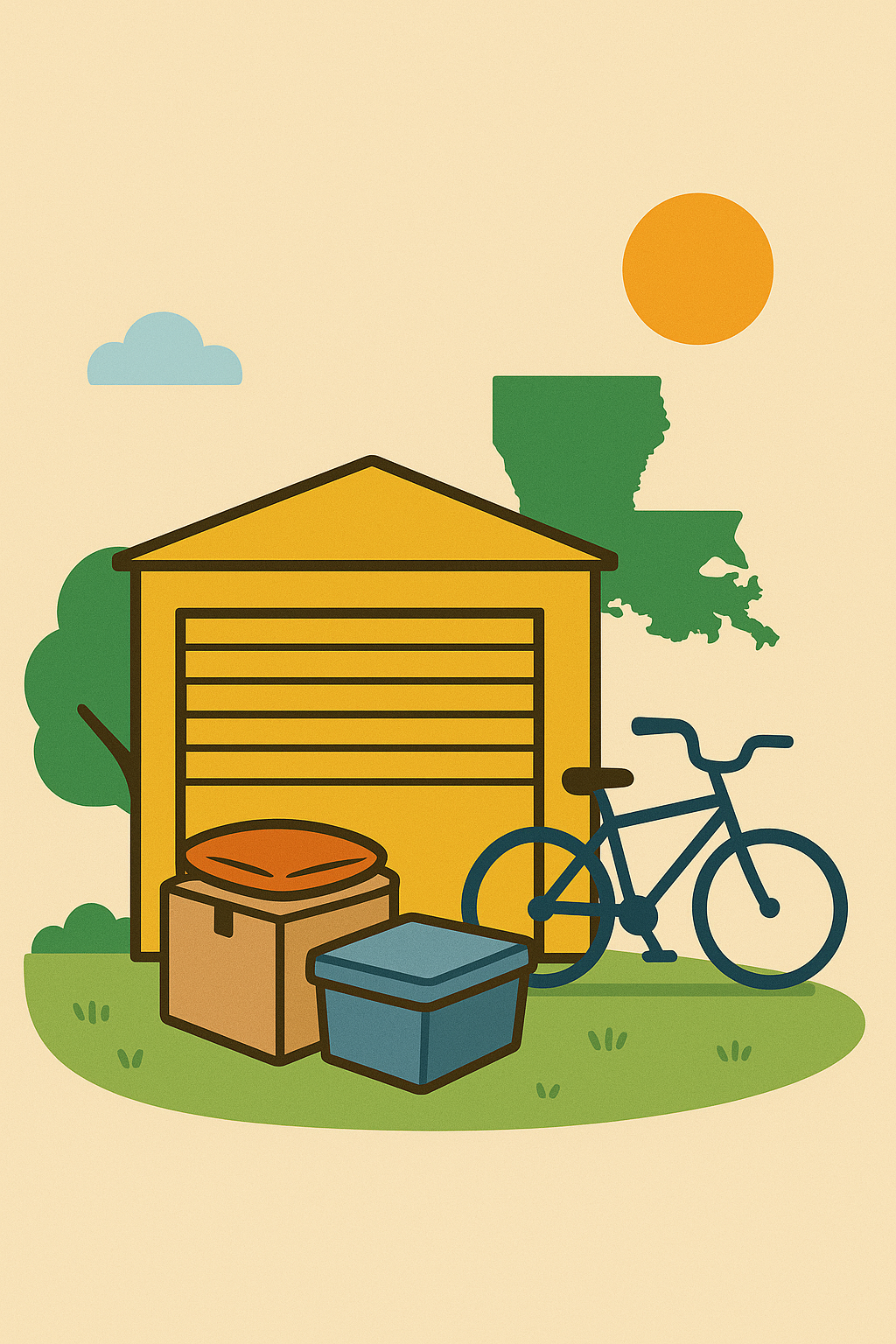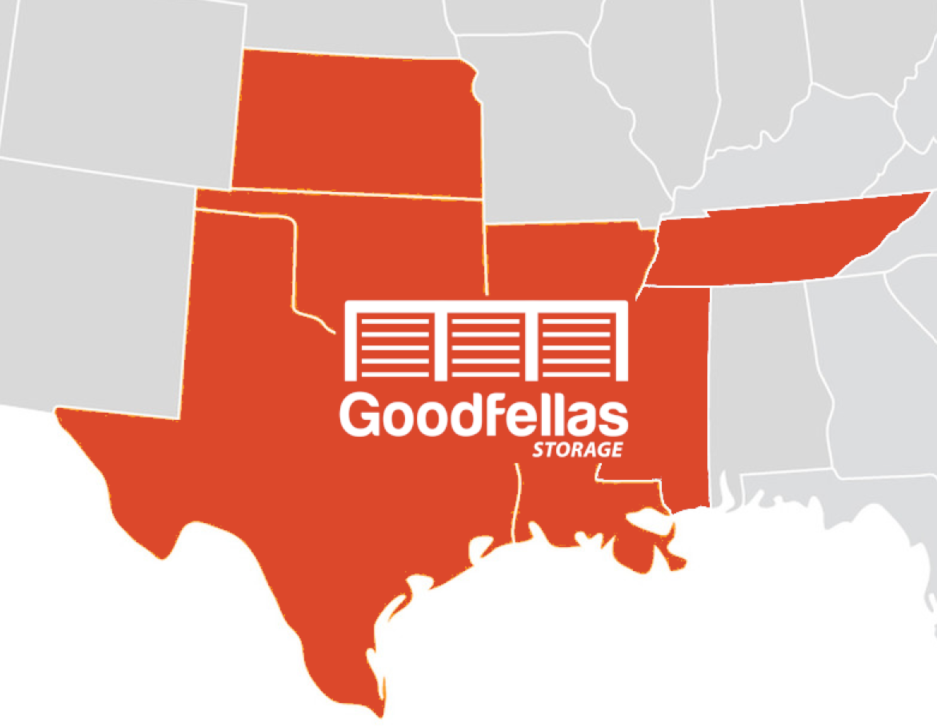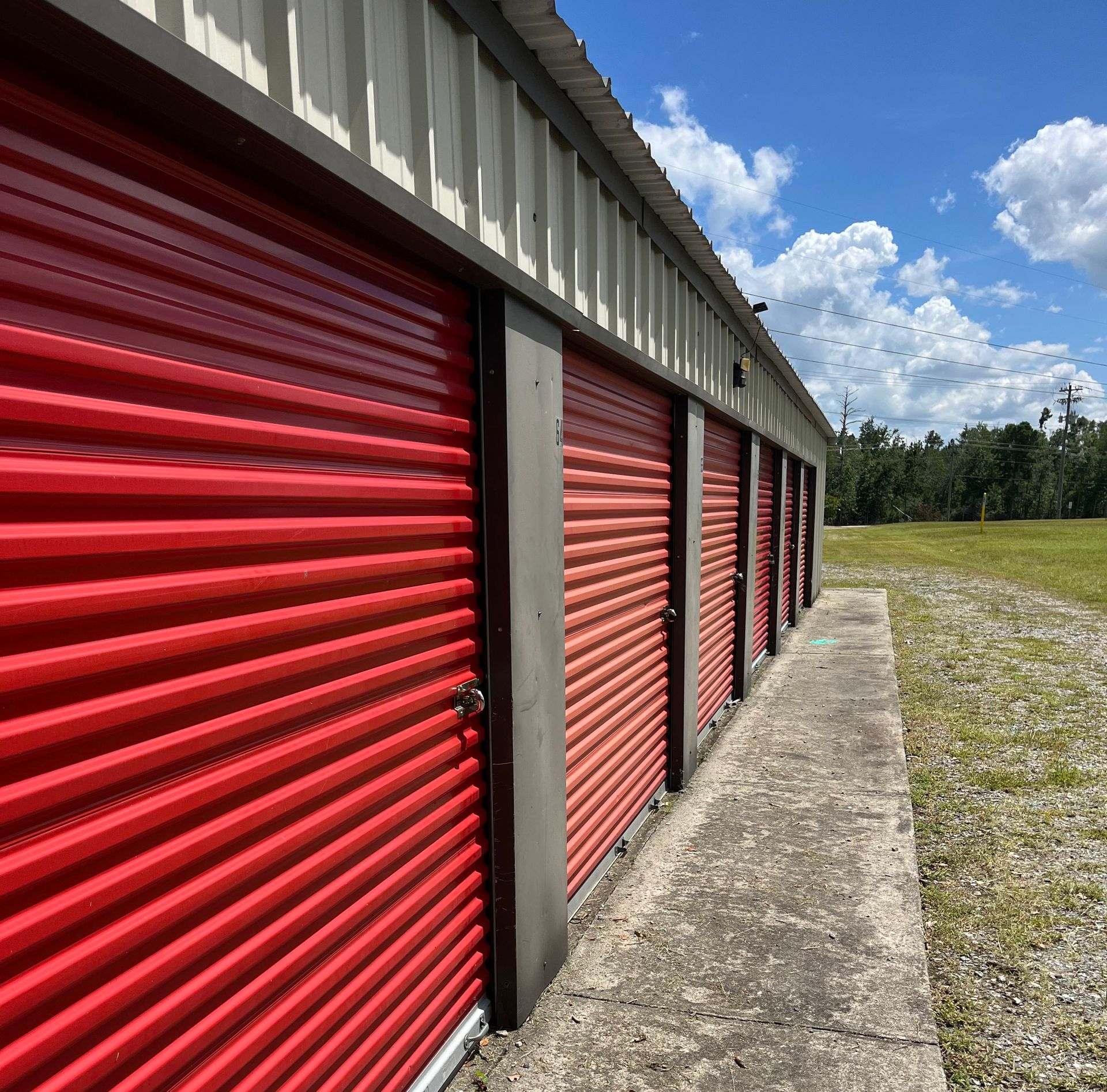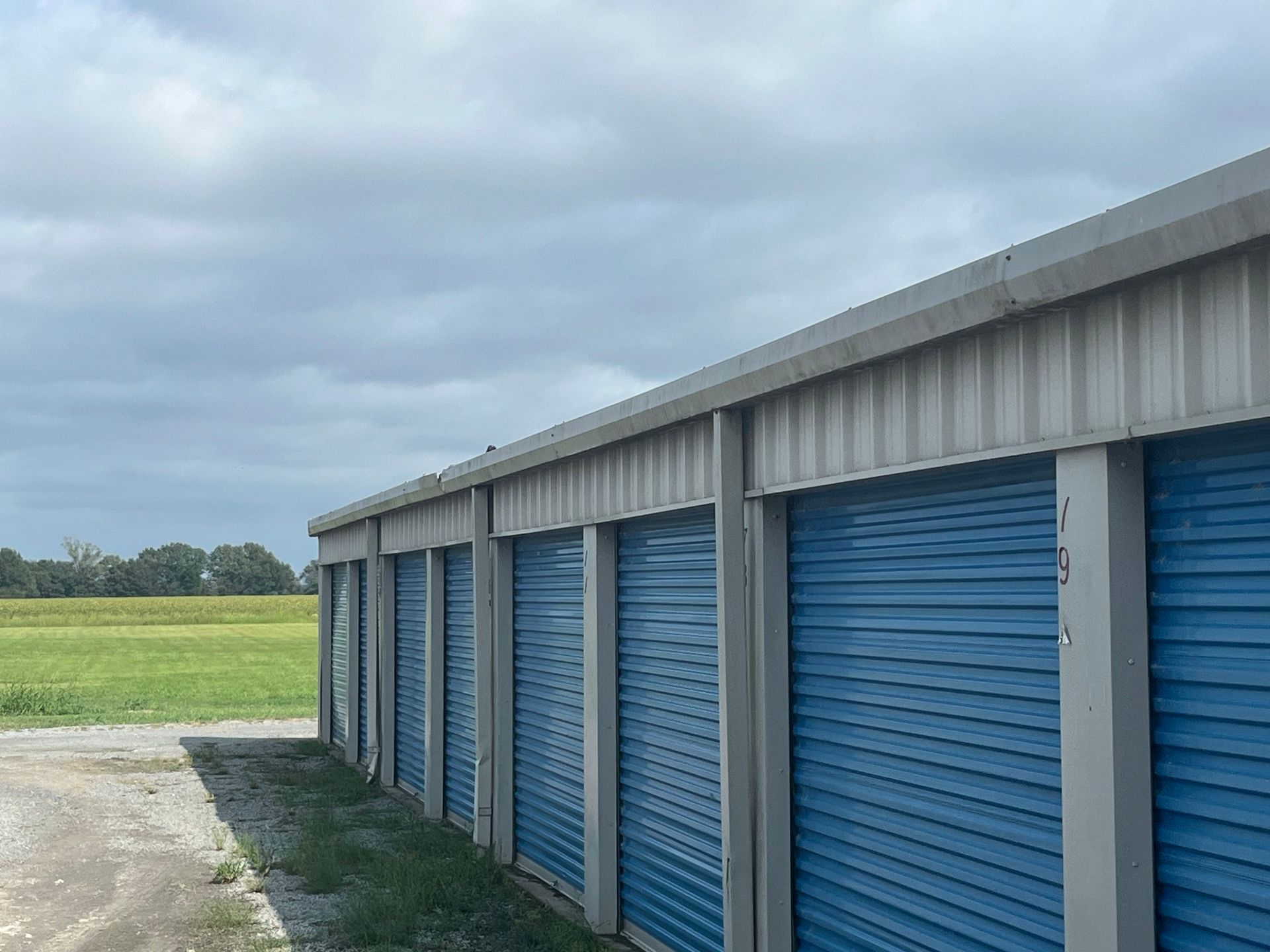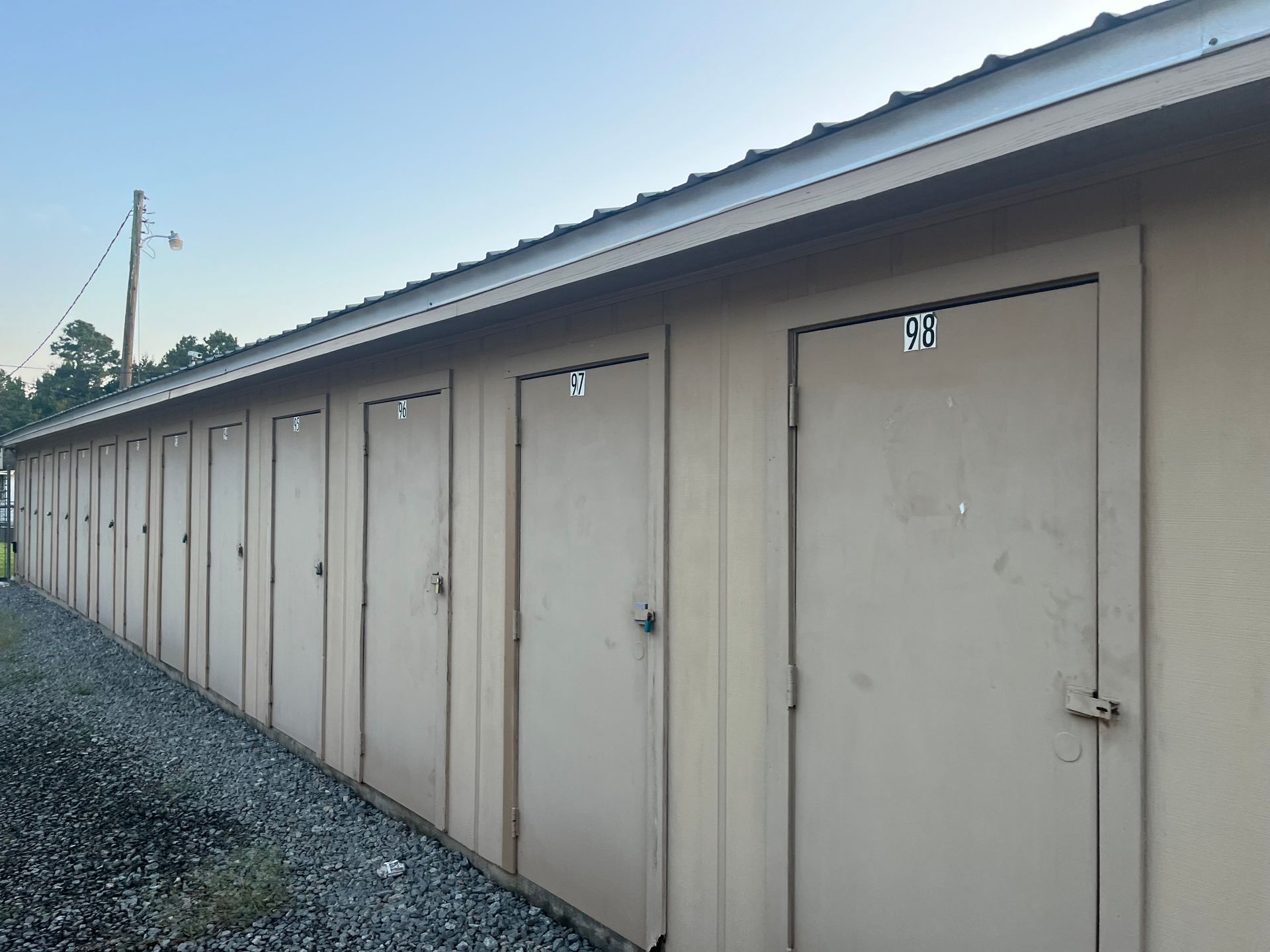How to Choose the Right Size Storage Unit
Your Complete Storage Unit Size Guide
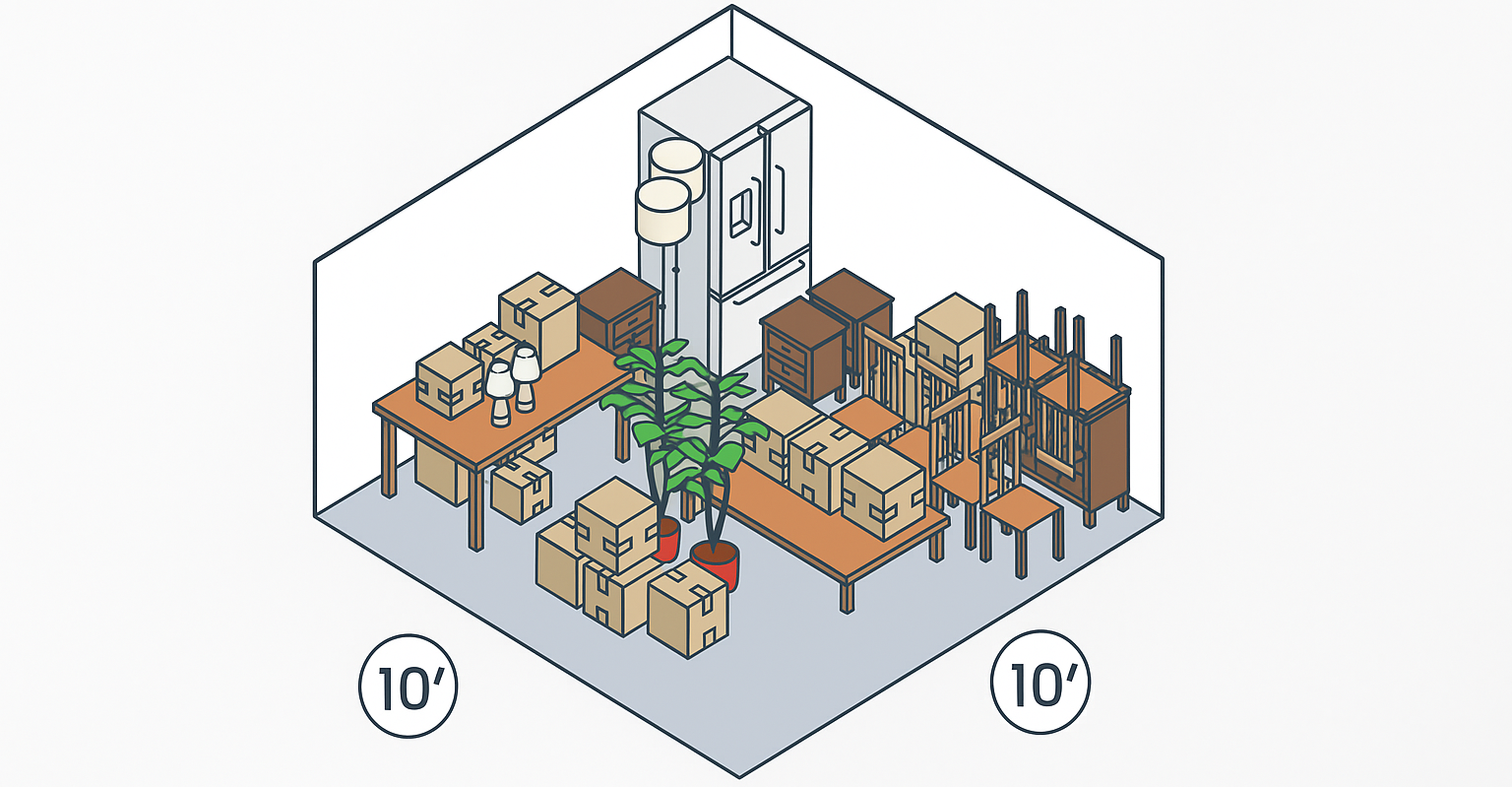
Choosing the right storage unit size is one of the most important steps when renting storage. Too small, and you’ll be frustrated trying to fit everything inside. Too large, and you may end up paying for extra space you don’t actually need. At Goodfellas Storage, we make the process simple with our comprehensive Storage Unit Size Guide. Whether you’re downsizing, moving, a student between semesters, or a business owner needing extra inventory space, this guide will help you confidently choose the best storage unit for your needs.
In this in-depth resource, we’ll break down exactly how much you can fit in each unit size, explore who typically needs which types of units, and even cover what not to store in a storage unit. Along the way, we’ll also share helpful tips for maximizing your storage, saving money, and making the process stress-free.
Why the Right Storage Size Matters
Many first-time renters underestimate the importance of selecting the right storage unit size. If you go too small, you’ll be forced to rent an additional unit or upgrade later, which can be inconvenient and costly. If you go too large, you’ll end up wasting money on unused space.
The right size saves you money, ensures your belongings are protected, and allows for easy access whenever you need to retrieve something. It also makes loading and unloading much easier, especially if you’re stacking boxes, arranging furniture, or storing fragile items.
That’s where the Storage Unit Size Guide comes in. By following a few simple steps and comparing your belongings against real-world examples, you’ll be able to find a unit that fits just right.
Step-by-Step: How to Choose the Right Size Storage Unit
If you’re feeling unsure about how much space you’ll need, start with these four steps from our Size Guide.
Step 1: Take Inventory of Your Items
Write down everything you plan to store. Include furniture, boxes, appliances, seasonal gear, business inventory, or hobby equipment. This step prevents surprises and helps you see the full picture.
Step 2: Group Items by Size and Type
Sort large furniture (sofas, mattresses), medium items (TVs, dressers), and smaller items (boxes, lamps, decor). Visualizing by category helps you plan your layout.
Step 3: Estimate Quantities and Stackability
Think about how well your items stack. Can you place boxes on top of dressers? Will fragile items require open space? This step maximizes vertical storage, which is essential for fitting more into a smaller footprint.
Step 4: Match Your Needs to a Unit Size
Compare your list against our Storage Unit Size Guide to select the right fit. For example, a 5x10 might handle a bedroom’s contents, while a 10x20 can store the furnishings of an entire home.
Storage Unit Size Guide
Here’s a breakdown of our most popular storage unit sizes and what fits inside:
5' x 5' (25 sq. ft.)
Comparable to a walk-in closet.
- Best for small furniture, appliances, office supplies, seasonal gear, or a few boxes.
- Great for students storing belongings over the summer or individuals keeping holiday decor safe.
5' x 10' (50 sq. ft.)
Comparable to a large shed.
- Fits items from a small apartment or a fully furnished bedroom.
- Perfect for business files, seasonal decorations, or medium appliances.
10' x 10' (100 sq. ft.)
Comparable to half a standard garage.
- Fits belongings of a one-bedroom home.
- Holds sofas, tables, mattress sets, dressers, and electronics.
10' x 15' (150 sq. ft.)
Comparable to a large bedroom.
- Fits the belongings of a two-bedroom home.
- Can store larger furniture, appliances, and business inventory.
10' x 20' (200 sq. ft.)
Comparable to a small garage.
- Fits contents of a three- to four-bedroom house.
- Excellent for families moving, remodeling, or staging a home for sale.
10' x 30' (300 sq. ft.)
Comparable to a large garage.
- Fits belongings of a four- to five-bedroom house.
- Accommodates oversized furniture, appliances, and even small boats.
Covered Parking
- Available for cars, boats, and RVs.
- Protects vehicles from sun, rain, and hail, with some spaces offering electrical hookups.
For more details and visual examples, check out our complete Size Guide.
Who Needs What Size? Matching Storage to Your Situation
Different lifestyles, life stages, and situations call for different storage needs. Below is a breakdown of the most common types of storage renters and the sizes that typically fit their situations. Use this as a practical reference to guide your decision.
Downsizers
When moving from a larger home into a condo, apartment, or retirement community, downsizers often need extra room for sentimental belongings, family heirlooms, or furniture that won’t fit in the new home.
- 10x15: Great for holding overflow furniture, seasonal items, and boxes of keepsakes.
- 10x20–10x30: For downsizers who want to keep large sets of furniture, extra appliances, or multiple bedrooms’ worth of belongings.
Students
Storage is a lifesaver for students transitioning between dorms, summer housing, and study abroad programs.
- 5x5: Fits boxes, small electronics, clothing, and dorm essentials.
- 5x10: Ideal for an entire dorm room setup, including a desk, mini fridge, mattress set, and dresser.
Movers
Families and individuals in the middle of a move often need short-term storage for everything they own.
- 10x10: Perfect for one-bedroom apartments.
- 10x15: Handles two-bedroom homes.
- 10x20–10x30: Provides enough room for the contents of a large family home.
Business Owners
Small and medium-sized businesses frequently use storage to cut down on expensive office or warehouse space.
- 5x5–5x10: Perfect for files, documents, and office supplies.
- 10x15: Good for seasonal inventory, extra desks, or trade show materials.
- 10x20+: Ideal for bulk shipments, contractor tools, or furniture storage for staging companies.
Hobbyists and Collectors
Hobbies often come with gear, tools, and supplies that take up valuable space at home.
- 5x5: For sports gear, collectibles, or crafting supplies.
- 10x10: Perfect for motorcycles, instruments, or medium equipment.
- 10x15–10x20: For woodworking setups, kayaks, or full collections.
Military Families
Military members often face relocations or deployments that require flexible storage options.
- 5x10: For one-bedroom apartments during deployment.
- 10x20: For entire household goods when relocating overseas.
Seasonal Residents (“Snowbirds”)
People who split time between two homes often need storage in one location to keep belongings safe while they’re away.
- 5x10–10x15: For furniture, seasonal clothing, and household goods.
- Covered parking: For cars, boats, or RVs that aren’t used year-round.
Families Remodeling or Renovating
During home improvement projects, storing furniture and appliances keeps them safe from dust and damage.
- 10x10–10x15: Enough for living room sets, dining tables, and large appliances.
- 10x20: For storing multiple rooms’ worth of belongings during larger remodels.
Newlyweds or Growing Families
Merging households or welcoming new family members often creates a sudden need for extra space.
- 10x10: Perfect for duplicate furniture pieces and boxes of household goods.
- 10x15–10x20: For storing bulky furniture until the family settles into a bigger home.
Empty Nesters
Parents whose children have left home may want to clear out bedrooms without giving away items permanently.
- 5x5–5x10: Great for clothing, sports gear, and keepsakes.
- 10x15: For furniture and larger collections of belongings being saved for future generations.
Travelers and Digital Nomads
Those who live life on the move—working remotely and traveling often—need a safe place to keep personal belongings.
- 5x5: For essentials, documents, and electronics.
- 5x10: For compact furniture and boxed items.
Estate Storage
When handling a loved one’s estate, storage can provide time to sort through belongings respectfully.
- 10x15–10x20: Accommodates entire households while families process items at their own pace.
Vehicle Owners (Boats, RVs, Cars, Motorcycles)
For vehicles not in use year-round, storage ensures they’re safe and protected.
- Covered parking: For cars, RVs, and boats.
- 10x20–10x30: For motorcycles, jet skis, or trailers in larger enclosed units.
By considering your lifestyle, stage of life, and storage goals, you’ll be able to pick a unit size that not only fits your belongings but also makes your daily life easier. If you’re still unsure, refer back to our Storage Unit Size Guide for clear comparisons and examples.
What Not to Store in a Storage Unit
While storage units are versatile, there are certain items that cannot be stored due to safety or legal reasons:
- Perishable food: Can attract pests and create odors.
- Hazardous materials: Flammable, explosive, or toxic substances are strictly prohibited.
- Plants and animals: Storage units are not suitable for living things.
- Stolen or illegal goods: Subject to law enforcement action.
- Cash or high-value jewelry: Better kept in a bank or safe deposit box.
By following these guidelines, you keep your belongings safe and your storage unit compliant.
Internal Resources for Smarter Storage
If you want to get the most out of your unit, check out these related resources from Goodfellas Storage:
- How to Save Money With Efficient Storage Packing
- How to Store Seasonal Decor Like a Pro
- Decluttering a Garage? Here’s When to Use a Storage Unit
- Top 5 Reasons People Use Storage in the Carolinas
These guides are packed with insider tips to help you maximize space, protect your belongings, and make the storage process easier.
Storage in the Carolinas and Beyond
Goodfellas Storage proudly serves communities across North and South Carolina, including Asheboro, Mebane, St Pauls, Abbeville, Wagener, Manning, and Summerton. Residents in these areas use storage for everything from seasonal boat parking to keeping family heirlooms safe during a move.
For example:
- In Mebane, NC, students and young professionals often choose 5x5 or 5x10 units for apartment overflow.
- In Manning, SC, families undergoing home renovations rely on 10x20 units to store furniture and appliances.
- In Wagener, SC, RV and boat owners take advantage of covered parking options for year-round protection.
No matter where you are in the Carolinas or beyond, our Size Guide makes it easy to select the perfect fit.
Q&A: Common Questions About Storage Unit Sizes
Q: What is the most popular storage unit size?
A: The 10x10 is the most popular because it balances affordability with capacity. It can hold the contents of a one-bedroom home and is easy to organize.
Q: How do I know if I need a climate-controlled unit?
A: If you’re storing sensitive items like electronics, wooden furniture, or documents in a humid or hot climate, climate control is a smart choice.
Q: Can I change unit sizes later?
A: Yes. If you realize your unit is too small or too large, you can transfer to another available unit size. Checking the
Size Guide first helps minimize this need.
Q: Do I need insurance for my stored items?
A: Yes. Tenant protection plans or insurance policies provide peace of mind in case of damage or theft.
Q: How do I maximize space in my unit?
A: Use efficient packing techniques like stacking boxes, disassembling furniture, and placing heavier items on the bottom. For more tips, see
How to Save Money With Efficient Storage Packing.
Final Thoughts
Choosing the right storage unit doesn’t have to be stressful. By following the steps in our Size Guide, you can confidently match your belongings to the perfect unit. Whether you’re a student storing dorm items, a business owner managing inventory, or a family moving into a new home, Goodfellas Storage has a unit size that fits your needs.
Ready to find your match? Explore the full Storage Unit Size Guide today and rent your perfect unit with confidence.

